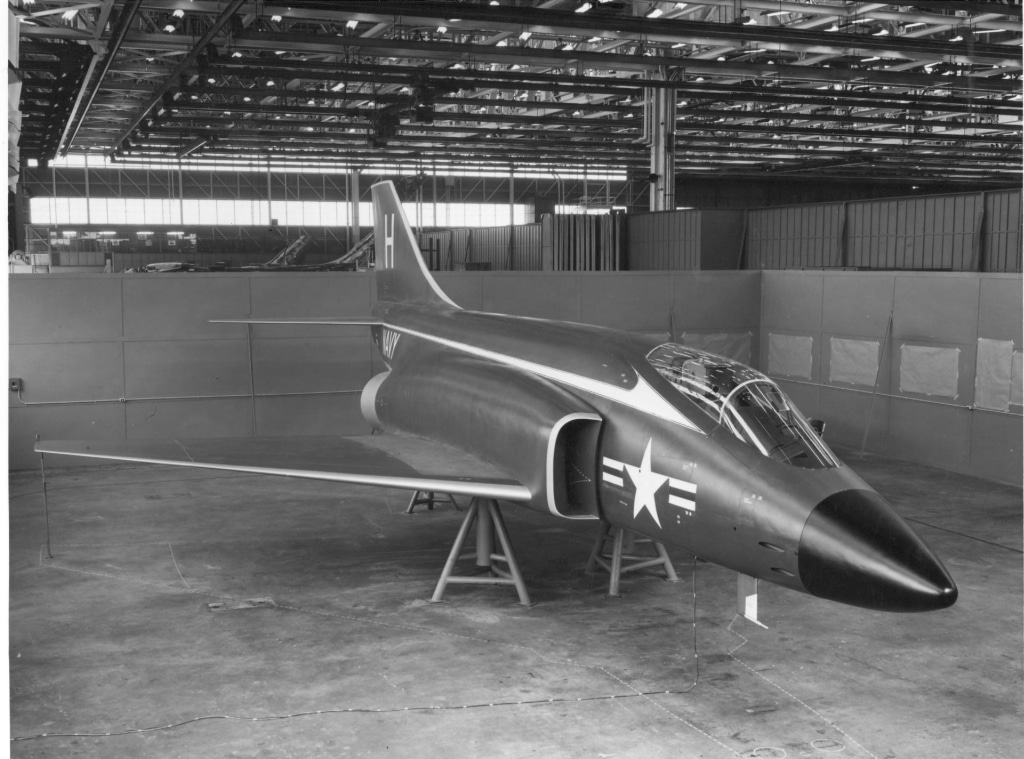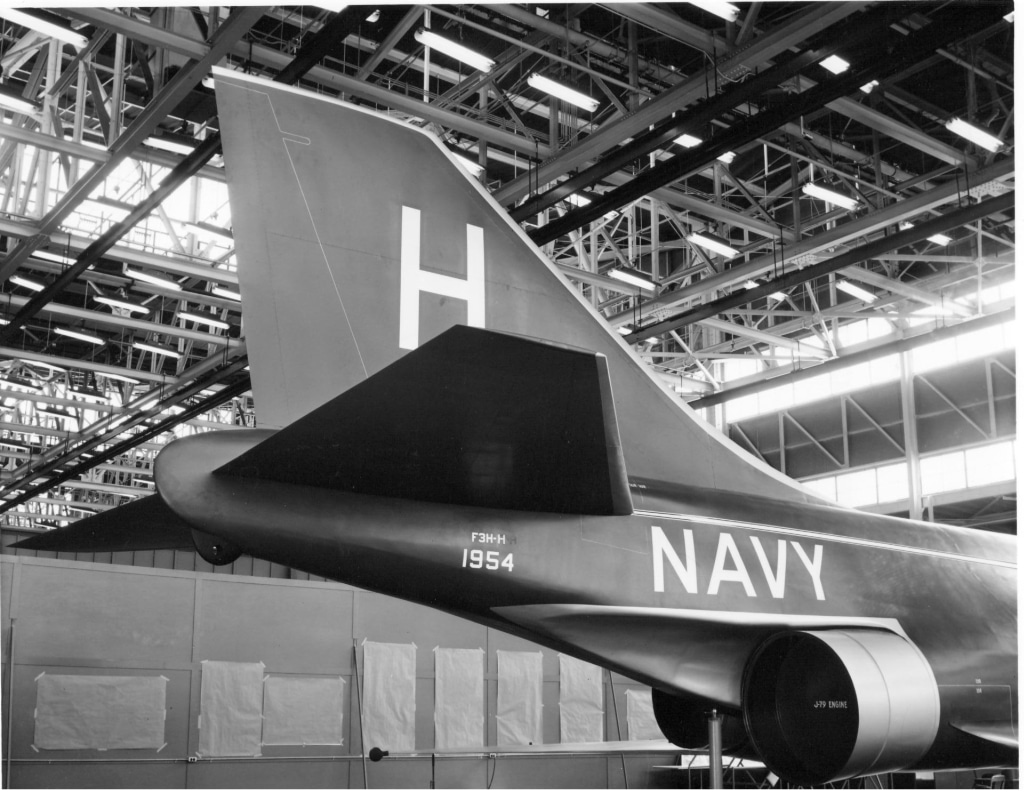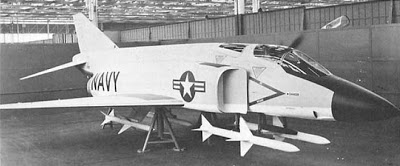We recently passed the one year anniversary of the retirement of the last F-4 (actually the QF-4) in the USAF inventory. And while other air forces still have a few left in service, the worldwide fleet is dwindling. Here’s some aviation trivia for you Phantom Phreaks. There is actually a continuous line of evolution from the McDonnell F3H Demon to the F-4 Phantom (which was designated F4H when it first flew). This photo is of the full scale mock up of the main missing link that connects the F3H Demon to the F4H Phantom. In 1953, the McDonnell team headed by Herman Barkey was looking at ways of extending the Demon’s viability and expanding its versatility. McDonnell had the in house designation F3H-X for the design as it was considered an evolution of the Demon.
F3H-C “Super Demon”: This design was first, it was powered by a single J67 engine. The J67 was to be have been a license-built version of the Rolls Royce Olympus. No J67s were ever built in the US and the Navy wasn’t keen on an unproven engine.
F3H-E: This was different enough from the Demon that it was given the Model 98A designator. It was also powered by the J67 but had a bigger wing than the Demon and had a level stance on the ground instead of the nose-high stance of the Demon.

(Wikipedia)
F3H-G (Model 98B): This one had twin J65 engines, a license built British Sapphire engine like that used on the Hawker Hunter. It had lateral intakes that looked more like the Phantoms and exhausts that looked also more like the eventual Phantom design. The Navy was attracted to twin engines for safety. The wing was also further enlarged from the F3H-E. It had four 20mm cannon and had an impressive external stores capability.
F3H-H: This was was the F3H-G but with two of the then-new and promising GE J79 engines.
Model 98C: Delta winged version of the F3H-G/98B with J65 engines.
Model 98D: Delta winged version of the F3H-G/98B with J79 engines.
F3H-J (Model 98E): Similar to the 98C/D, but with an even larger delta wing.
Model 98F: Recon version of the 98C.

The J79 was on the right side, the J65 was on the left side.
(Wikipedia)
Barkey’s team decided the F3H-G/98B was the most promising of the designs and built a full scale mockup, but one side was sized for the J65 engine and the other side sized for the J79 engine. On 19 September 1953 McDonnell submitted the design as an unsolicited proposal to the Navy. Though impressed with the design, the Navy had already ordered the Grumman F11F Tiger and Vought F8U Crusader for its supersonic fighter needs. The Navy, however, encouraged Herman Barkley’s team to refine the design to meet an all-weather attack requirement. This design was submitted to the Navy in 1954 and two prototypes were ordered as the AH-1 which had four 20mm cannon and eleven weapons stations.

planned trapeze launchers for the Sparrow missiles.
(Wikipedia)
The following year the all-weather attack program was canceled and McDonnell was asked to redesign the AH-1 into a two-seat interceptor with a single centerline station for a 600-gallon fuel tank and AIM-7 Sparrow capability. The J65 engine was dropped from contention when the Chief of Naval Operations selected the J79 engine for the new aircraft which would be designated F4H Phantom II.
And the rest is history!
